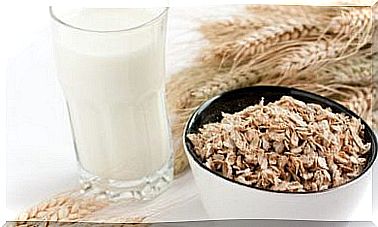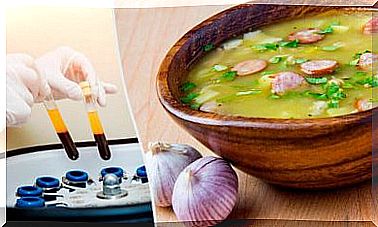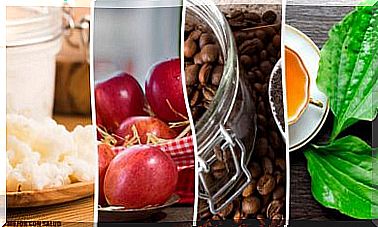The Color Of Food And Its Nutritional Value

“Eat at least one dark green and one orange vegetable every day.” These are the recommendations from the Department of Health in Canada. However, what is the reason why this statement is so specific? What does the color of the food have to do with its quality and nutritional value?
In general, we must say that not all foods in the same color have the same properties. From a nutritional point of view, it is difficult to compare cow’s milk with onions, tuna with tomatoes or nuts with wholemeal pasta.
When it comes to fruits and vegetables, however, their color plays a role. It gives us information about their characteristics.
Phytochemicals – the pigments of vegetables
All foods contain macronutrients (carbohydrates, lipids and proteins) and micronutrients. You may know them better as vitamins and minerals. In addition, however, plant-based foods also contain other non-nutrient-rich components: phytochemicals.
Phytochemicals are present in the plants for their own benefit. However, it has been shown that they also have a nutritional effect on our bodies. Most of them play a powerful antioxidant role and protect against diseases such as cancer, degenerative diseases and cardiovascular disease.
What does the color of our food tell us?
In general, we can group the phytochemicals that give color to our food into 3 major groups : carotenoids, chlorophyll and anthocyanins.
Carotenes – beyond the shell
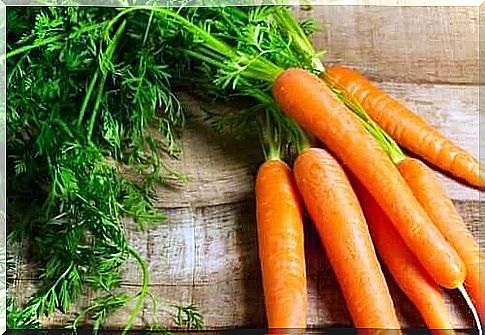
The carotenoid pigments are important to us, but we cannot synthesize them on our own. This is why we need to get them from food. They are present in orange, yellow and red fruits and vegetables.
Scientific evidence suggests that consuming carotene is associated with a lower risk of cardiovascular disease. They are also powerful antioxidants, in addition to protecting the skin and contributing to good eye health.
However, you should know that those you can only get the health benefits of carotenoids from pure food. Researchers have not yet observed the same effect from commercial supplements.
The foods that have the most carotenoids include:
- Red: tomatoes, cherries, raspberries, watermelon and red peppers
- Orange: carrots, papaya, apricots, peaches, nectarines, squash and sweet potatoes
- Yellow: cantaloupe, mango and corn
Chlorophyll
Chlorophyll-rich foods are easy to recognize due to their green color. They basically help us to oxygenate our body, as well as promote the elimination of heavy metals and contribute to a healthy intestinal flora.
In addition , some studies suggest that:
We find chlorophyll in many green leafy vegetables, such as leaf beet, spinach, broccoli, asparagus, cabbage, artichokes and kiwi. These vegetables are usually also rich in vitamin K, folic acid and magnesium.
In addition, most of them also have a hidden secret: they are very rich in carotenes, it’s just that the yellow pigment is hidden behind the potent green color.
Little anthocyanins
Finally, we have anthocyanins, which are easily recognizable by the purple and blue color they give to fruits and vegetables. The best sources for them are blueberries, blackberries, grapes and red cabbage. Furthermore, there are also some red fruits, such as strawberries, which are rich in this component.
The antioxidant effects of anthocyanins have been linked to a lower risk of heart attack in young and middle-aged women. Epidemiological studies also link regular consumption of some sources of anthocyanins to:
- Lower risk of cardiovascular disease
- Lower incidence of type 2 diabetes
- A neuroprotective effect
- Effective maintenance of body weight
- Lower mortality
The color of our food – what about white vegetables?
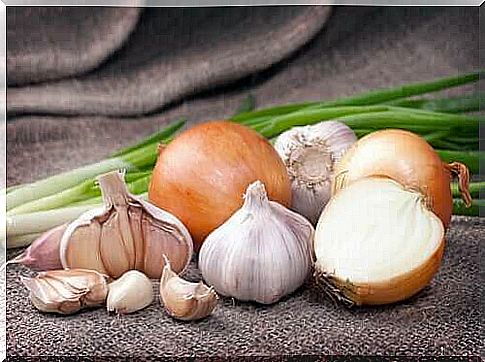
We could not finish the article on the color of food without knowing what the white color of food is trying to tell us. These vegetables often go unnoticed because they are not so colorful. However, they also provide us with many specific nutrients that we should highlight.
Leeks, radishes, onions and garlic are all rich in Indols. The latter two are also a source of quercetin and allicin, which are substances that can help improve our cardiovascular health.
The color of our food and our diet
When it comes to following a good diet, you must not only rely on the color of the food, but on the nutritional value of each fruit, vegetable and grain, as this is also determined by other components. In fact, there are many more phytonutrients in vegetables that can not only be recognized by color.
Nor can we say that orange fruit is better than purple fruit, or that you just have to eat red food to prevent cardiovascular disease.
What is interesting, from a chromatic point of view, is that the possible food combinations we can consume daily are endless. In fact, the more varied your diet, the less likely you are to lack a specific nutrient.
Thus, we must ensure a well-balanced contribution from all phytonutrients so that we can benefit from all their health benefits. Finally, of course, keep in mind that there are many more types than the foods we mentioned in this article.



